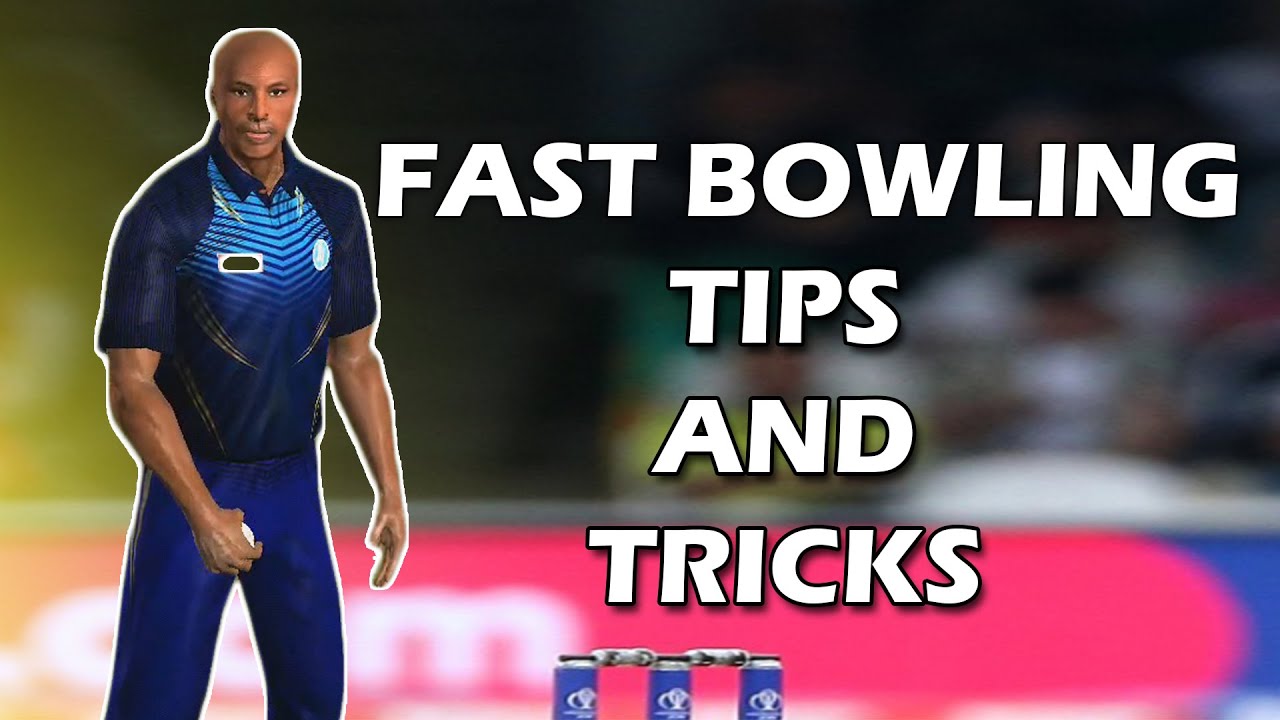Welcome to the ultimate guide for mastering tape ball swinging in fast bowling! If you've ever watched a game and marveled at the skill involved in making that little ball swing through the air, you're not alone. Tape ball cricket is not just a game; it's a blend of strategy, technique, and a dash of flair. In this guide, we will unravel the mysteries behind tape ball swinging and provide you with tips and tricks to perfect your bowling technique. Ready to dive in? Let's get swinging!
Understanding the Tape Ball

Tape balls are a unique element in the realm of cricket, especially popular in Pakistan and India. Unlike traditional cricket balls, tape balls are lighter, made of a tennis ball wrapped in layers of adhesive tape. This design gives them distinct characteristics that affect how they behave in the air during play. Let’s break down the essentials of tape balls to help you understand why they are critical for mastering your swing.
Characteristics of a Tape Ball
- Weight: Typically lighter than standard cricket balls, making them easier to throw and swing.
- Surface Texture: The smooth surface created by the tape can make gripping and spinning easier.
- Durability: Tape balls can withstand varied weather conditions, making them ideal for casual and street cricket.
- Swing Potential: Despite its lightness, tape balls can swing significantly in the air, especially when bowled with the right technique.
Why Tape Balls Are Beneficial for Practice
Here are some reasons why practicing with tape balls can help sharpen your fast bowling skills:
| Benefit | Description |
|---|---|
| Cost-Effective: | Tape balls are inexpensive compared to traditional cricket balls, making them perfect for practice. |
| Improves Bowling Technique: | Bowling with a tape ball helps improve your wrist position and finger placement. |
| Enhances Swing Skills: | Fast bowlers can master swing techniques without the fear of breaking anything. |
| Fun and Social: | Playing with tape balls often encourages friendly games in parks and streets. |
In summary, understanding the characteristics of tape balls is crucial for any aspiring fast bowler. Their unique properties not only allow for exciting gameplay but also serve as an effective tool for mastering swing bowling techniques. So, grab a tape ball, gather your friends, and start practicing!
The Physics of Swing Bowling

Understanding the physics behind swing bowling can feel like trying to decode a secret language—it’s fascinating yet complex! At its core, swing bowling is all about manipulating the movement of the ball through the air. The two primary types of swing are conventional swing and reverse swing. Each type relies on a combination of aerodynamics and ball condition to achieve that magical curving motion.
So, how does it work? Let’s break it down:
- Air Pressure and Speed: When a bowler delivers the ball, it creates a difference in air pressure on either side. If the ball is shiny on one side and rough on the other, it travels at varying speeds due to this uneven air pressure.
- Angle of Release: The angle at which a bowler releases the ball significantly influences swing. A slight change in angle can result in a substantial swing—a great bowler knows precisely how to control this!
- Ball Condition: The wearing of the ball affects its swing ability. A well-maintained shiny side can enhance conventional swing, while an older, rough ball might promote reverse swing. It’s essential to understand which condition gives you the best results.
- Environmental Factors: Conditions like humidity and wind can impact swing. Higher humidity generally favors swing bowlers, while dry conditions can neutralize it.
In essence, mastering the physics of swing bowling gives you a formidable edge. Those who can blend technique with an understanding of these principles can truly dazzle on the pitch!
Grip Techniques for Tape Ball

The grip you use while bowling with a tape ball is critical to achieving the desired swing. Unlike a standard cricket ball, tape balls are lighter and have a different feel due to their construction, which makes mastering your grip even more vital. Here are some effective grip techniques to experiment with:
| Grip Type | Description |
|---|---|
| Seam Grip | This is all about placing your fingers on the seam of the tape ball. It allows for better control and can produce excellent swing. |
| Conventional Grip | For this grip, hold the ball with your index, middle fingers, and thumb. This grip is versatile and suits various bowling styles. |
| Index Finger Position | Using your index finger to press down slightly on one side of the tape ball can enhance the swing in that direction. |
| Vertical Hold | Holding the ball vertically can help produce more swing, as it helps in controlling the airflow around the ball. |
To determine which grip works best for you, practice is essential. Feel free to adjust your grip depending on the conditions and the type of swing you want to achieve. The key to mastering tape ball swinging lies in constant experimentation and adapting your technique based on your playing environment. Happy bowling!
Bowling Styles and Strategies
When it comes to mastering tape ball swinging in fast bowling, understanding different bowling styles and strategies is crucial. Each bowler has a unique approach, but let's break down some of the most common styles and how they can influence your performance on the field.
- Swing Bowling: This is the art of getting the ball to move in the air. Fast bowlers can achieve this by using different grip techniques, angle of delivery, and seam position. When you can master swing bowling, you’ll be able to deceive batsmen of varying skill levels and keep them guessing.
- Yorker Delivery: Delivering a yorker is an effective strategy against aggressive batsmen. By targeting the base of the stumps, you can create pressure and force batsmen into defensive plays, allowing you to exploit any weaknesses.
- Bouncers: Occasionally bowling bouncers can intimidate the batsman. This surprising tactic can disrupt their rhythm and make them more prone to mistakes. Just remember, mix it up; you don’t want to be predictable to the batsman!
- Change of Pace: Slowing down your bowling speed during a match can also be an effective strategy. By changing your pace, you can throw the batsman off their timing, increasing your chances of taking wickets.
Effective bowling strategies involve using a combination of these styles. Prioritizing variety not only keeps the batters off balance but also allows you to showcase your skills while keeping your confidence high.
Practical Steps to Improve Swinging
Improving your tape ball swinging technique is a multi-faceted process. While natural ability plays a role, consistent practice and understanding of the fundamentals are vital. Here are some practical steps you can follow to enhance your swinging skills:
- Focus on Grip: The way you hold the ball significantly impacts how it will swing. Experiment with different grips—keeping the seam upright can encourage greater swing.
- Maintain Ball Condition: A shiny side and a rough side will help the ball move in the air. Ensure you or your team keeps one side polished during the match, which maximizes your swing potential.
- Work on Seam Positioning: Align the seam of the ball towards the slip fielders when aiming to swing it away from the batsman. Conversely, if you intend to swing it in, adjust your seam accordingly.
- Practice Your Run-Up: A consistent and steady run-up contributes to balance and rhythm, which are essential for accurate and effective delivery.
- Understand the Wind: Wind direction can significantly affect swing. If you’re bowling with the wind, it can enhance your swing; against it, you might want to adjust your length and line.
Dedicate some practice sessions solely to swinging techniques. Incorporate drills focused on bowling with both conventional and reverse swing to understand the subtleties. Remember, like any skill, mastering swinging takes patience and persistence!
Common Mistakes to Avoid
When it comes to mastering tape ball swinging, recognizing and avoiding common mistakes is half the battle! Here’s a rundown of frequent pitfalls that can hinder your progress:
- Overexerting Yourself: Many beginners tend to overthink their swings, contributing to poor execution. Instead of forcing the swing, focus on a smooth, relaxed motion.
- Neglecting Your Grip: Your grip plays a pivotal role in controlling the swing. Ensure your fingers are aligned correctly and the ball is held firmly, but not too tight.
- Ignoring Seam Position: The seam of the tape ball is crucial. Failing to ensure the seam is upright can lead to inconsistent swinging. Always pay attention to its position before your delivery.
- Inconsistent Speed: Fast bowlers should maintain a consistent speed to effectively swing the ball. Changing your pace too frequently can impact your swing dynamics.
- Not Practicing Enough: Swinging a tape ball effectively requires practice. If you’re not dedicating enough time to it, you might find yourself struggling during games.
- Skipping the Follow-Through: A good follow-through is essential for both accuracy and swing. Neglecting this can lead to unintentional deviations in your delivery.
By being mindful of these common mistakes, you’ll be better equipped to refine your technique and elevate your tape ball bowling game!
Training Drills for Fast Bowlers
Ready to take your tape ball swinging skills to the next level? Incorporating specific training drills into your routine can make a world of difference. Here’s a list of effective drills designed to boost your technique and overall performance:
| Drill | Description | Benefits |
|---|---|---|
| Seam Position Practice | Practice bowling with a focus on maintaining the seam's upright position. | Improves control and consistency in swing. |
| Speed Variation Drill | Alternate between fast and slower deliveries to see how the swing reacts. | Helps bowlers learn to control their swing at different speeds. |
| Target Hitting | Set up targets on the pitch and challenge yourself to hit them while swinging the ball. | Enhances precision and improves your swing technique. |
| Follow-Through Focus | Practice your follow-through without focusing on the ball's swing. | Ensures you’re developing a strong, effective follow-through every time. |
| Video Analysis | Record your deliveries and analyze them to identify areas for improvement. | Provides visual feedback and accelerates learning. |
By regularly incorporating these drills into your training routine, you'll develop a sharper focus, better technique, and an understanding of how to maximize your tape ball's swing in fast bowling situations. Happy practicing!
Ultimate Guide to Mastering Tape Ball Swinging in Fast Bowling
Tape ball cricket is a popular variation of the sport, especially in many South Asian countries. The unique nature of the tape ball offers thrilling challenges for fast bowlers, particularly in mastering swing. This guide will delve into techniques, tips, and tricks to help bowlers effectively swing the tape ball when bowling at high speed.
Understanding Tape Ball Swing
Swing bowling is the phenomenon where the ball deviates in the air as it travels towards the batsman. This effect can be accentuated with a tape ball due to its lighter weight and different surface characteristics. Here are some key factors that influence swing:
- Condition of the Ball: A well-maintained shiny side will help in achieving maximum swing.
- Bowler's Grip: A proper grip is crucial to controlling the swing.
- Release Angle: The angle at which the bowler releases the ball influences the direction and amount of swing.
- Seam Position: Positioning the seam towards the slips or the leg side can determine the type of swing (inward or outward).
Techniques to Master Tape Ball Swinging
Mastering the swing with a tape ball involves practice and understanding the following techniques:
| Technique | Description |
|---|---|
| Outswing | Bowled with the shiny side facing the slips. |
| Inswing | Bowled with the shiny side facing the batsman. |
Practicing in various conditions and with different grips will enhance your skill set, enabling you to deceive batsmen effectively.
Tips for Success
- Practice regularly to develop muscle memory.
- Watch professional bowlers for techniques and tips.
- Experiment with different angles and speeds to see what works best for you.
Mastering tape ball swinging in fast bowling is a blend of technique, practice, and understanding the physics of the ball. With dedication and the right approach, bowlers can significantly improve their skills, making their game even more exciting.
Conclusion
In conclusion, by focusing on the key aspects of swing bowling, including grip, seam position, and ball maintenance, bowlers can master the art of tape ball swinging, elevating their performance and creating challenges for batsmen.
 admin
admin








